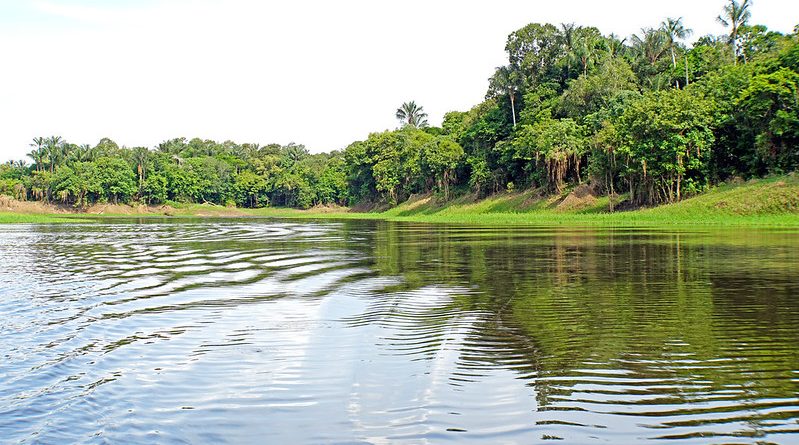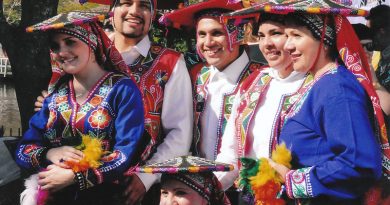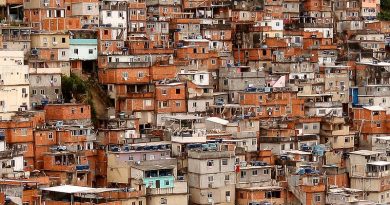Exploring the Mighty Amazon
The Amazon has long been the epitome of trekking into vast, unexplored wilderness .The second longest river in the world, the Amazon stretches 3900 miles from the Andes in Peru to the Atlantic and supports ten percent of the world’s plant and animal life. This is the largest tropical rainforest on earth and nature at its most awe-inspiring. The trouble is where do you start?
Trek Essentials
Best season: March- December.
Best sights: Amazing waterlife on the multi coloured amazon tributaries, like the mystical pink dolphin.
Remember to bring: Ucuru oil to prevent mosquitos and as a sunscreen.
Watch out for: Stinging fire ants and other winged nasties.
You can travel entirely by boat along the tributaries of the Amazon river.
Manaus, the main city in the Brazilian Amazon is a great central hub to organize treks deep into the jungle in all directions. Manaus is in the heart of the Amazon – it’s a modern, bustling and vibrant city. A centre of culture and trade, it is built on the riches of the forest which surrounds it. It lies on the Rio Negro and is the last frontier in a vast area, much of which remains unexplored.
From here, you can travel west along the Rio Negro to the flooded forest of the Anavilhanas Islands for a firsthand look at the wildlife. The Anavilhanas Islands are a biological reserve and the largest group of freshwater islands in the world. Over 250 uninhabited islands stretch over 300 miles.
Survival Tips
It may seem strange to visit the Amazon during the rainy season, but if you can bear the rampant mosquitos it definitely has its pros. At this time of year half of the Anavilhanas Islands are submerged, which makes it easier to see some animals as they seek refuge on the higher ground. You may catch a rare glimpse of a manatee or a Brazilian Otter. The water here can be up to 25 feet deep – perfect for pirhana fishing. In the dry season, the water may only reach 3 feet, leaving the pirhanas short of food and desperate to chomp onto some flesh – it may even be yours if you’re not careful.
How do you find your way around a river? Look at its colours! River colour is like a road sign in the Amazon. The Rio Negro’s beautifully reflective blackwater comes from the tannin of decomposed plants, whereas the milky whitewater of the Amazon comes from the muddy sediment from the young and soft Andes mountains.
When hanging a hammock in the jungle, look out for formiga de fogo, stinging fire ants. They can give a really mean bite. It’s best to make some kind of shelter as protection from the rain but also from things that might fall from the jungle canopy – fruits, leaves, monkey droppings, etc. This ‘roof’ will also collect any rainwater, which you can drink in the morning.
You wouldn’t think finding water in the Amazon would be a problem. But fresh, clean water is essential and knowing how to find a source of it is vital. The Sipo de Auga, a vine that collects water within it, can save your life. You simply cut it open and drink the water inside.
Raw maggots don’t sound like a particularly tasty snack but they are actually a good source of protein. The beetle burrows into the coconut shell to lay her eggs and the maggots survive munch their way through the coconut ‘meat’ before digging their way out. Yum Yum!
Ucuru Oil is an indispensable substance used by the indigenous peoples of the Amazon jungle as a natural insect repellent and sunscreen. This red oil is taken from a plant which grows in the jungle and can be smeared onto the skin as required.
Did You Know?
Three billion gallons of fresh water flow down the river every minute. That’s enough to supply the whole of New York City for sixty years!
Nearly 20% of the Brazilian Amazon has been destroyed by either farming or logging. The tropical trees and plants that have been lost can be extremely valuable. A quarter of the drugs that we use in the west are derived from rainforest ingredients. But here in the Amazon, less than one percent of tree and plant species have actually been tested by scientists.
Piranhas are one of two thousand species of fish that live in the Amazon. They have fierce, razor-sharp teeth. The black piranha is considered one of the most dangerous. But they’re more likely to feed on small fish, shrimp and insects, than on humans. Unless it’s the dry season, – then they go into a FEEDING FRENZY when there’s a shortage of food in the shallow water.
One of the more interesting mammals you may see on an Amazon river trip is the pink dolphin. Legends abound about these mystical mammals: the most popular story is that during the full moon they turn into handsome men who seduce local girls. Another is that the spirit of a drowned person enters the dolphin and then turns into a beautiful young man on land. Unfortunately, even the mystical pink dolphin is not immune to bounty hunters – their penises are considered to be an aphrodisiac so the battle to protect them continues.
Of the 6 million indigenous Indians living here before the Portuguese arrived 500 years ago, there are only 200,000 left. For them, the jungle is a storehouse of food, remedies, poisons and intoxicants. It’s estimated that 137 plant, animal and insect species are lost every day due to rainforest destruction.
Amazingly, over 80% of the developed world’s diet originated in the tropical rainforest. The list is endless – oranges, potatoes, ginger, coffee, chocolate, sugar cane, endless spices and of course the Brazil nut.




